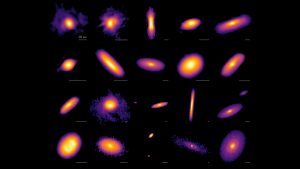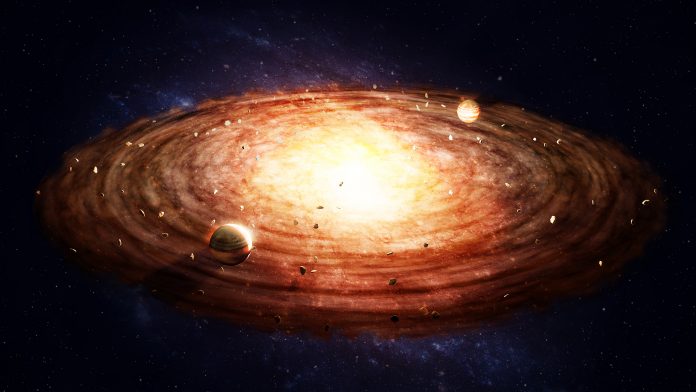A research team has used the Atacama Large Millimeter/submillimeter Array (ALMA) to observe the mystery of planet formation.
They observed disks around 19 protostars with a very high resolution to try and unlock the mystery of planet formation.
The study was motivated by the recent findings that the formation of planets may be well-underway in the more-evolved proto-planetary disks. Until now, there had been no systematic study to search for signs of planet formation in younger protostellar systems.
The research, ‘Early Planet Formation in Embedded Disks (eDisk). I. Overview of the Program and First Results,’ was detailed in The Astrophysical Journal.
How do planets form?
Planets form in a disk around a newborn star; however, these proto-planetary disks only last a few million years.
This further adds to the mystery of planet formation, because we don’t know how rapidly it begins within these disks in such little time.
Recent ALMA observations have revealed that many proto-planetary disks have substructures such as gaps and rings, indicating that planets are already forming from the disk.
The detection of rings and gaps in disks revolutionised the field of planet formation and made the use of disk substructures as signposts for young planets a reality.
Another mystery of planet formation is that it is still debated whether such substructures are always created by planets. However, they are still important in their own right.
For instance, regions of density enhancement, such as rings and spirals, have a local pressure maximum that is conducive to the trapping of relatively large grains, which facilitates the formation of planetesimals and, ultimately, planets.
Nagayoshi Ohashi from Academia Sinica Institute of Astronomy and Astrophysics, commented: “These previous results motivated us to examine even younger disks around protostars to answer the question, at what stage of star formation do planet forms.”
Observing disk differences could solve the mystery of planet formation
The team observed disks around 19 protostars located within about 650 light-years from Earth.

© ALMA
This is the first systematic study to investigate the detailed structure of disks around a large sample of protostars with high angular resolution. It could finally have solved the mystery of planet formation.
The observations clearly show that the disks around protostars are different from more-evolved proto-planetary disks.
Among the 19 protostars, rings and gaps, which are signs of planet formation, were observed only in a few disks. Moreover, the ring structures are less distinct than those seen in the proto-planetary disks.
“We did not expect to see such clear differences between disks around protostars and more-evolved disks,” said Ohashi. John Tobin, a Co-PI of the programme at the National Radio Astronomical Observatory (USA).
He concluded: “Our results suggest that disks around protostars are not fully ready for planet formation. We believe that the actual formation of the planetary system progresses rapidly in the 100,000 years to 1,000,000 years after star formation begins.”









